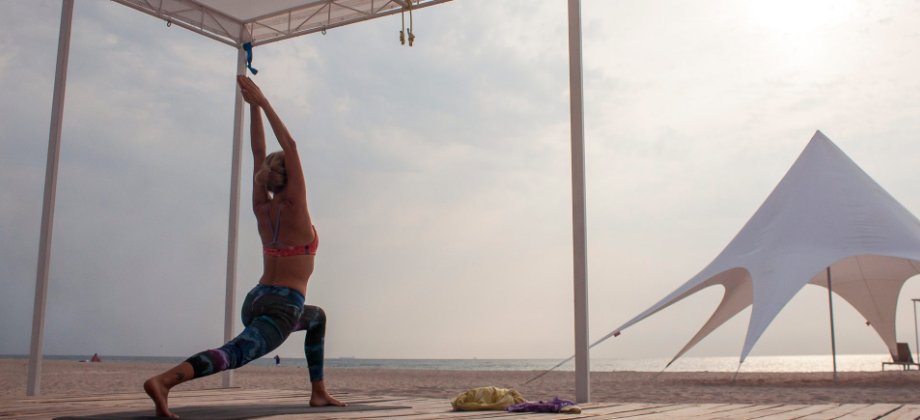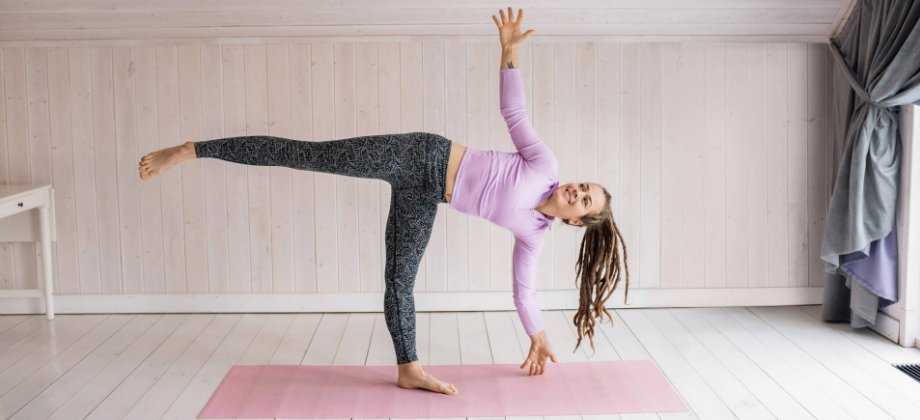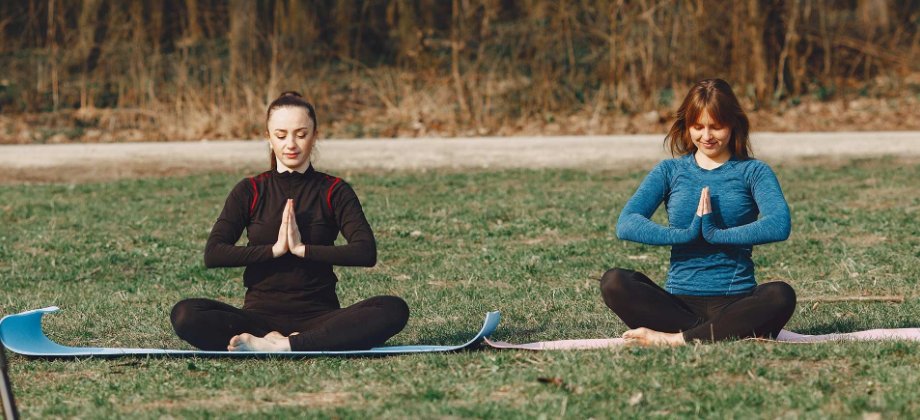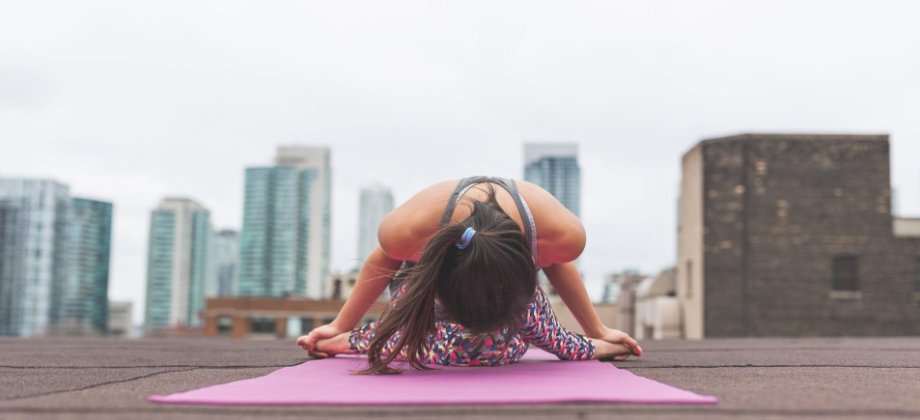
6 Things You Should Encourage Your Yogis to Do Outside of Class
As a teacher, you know that the yoga practice isn’t just about asana, the physical part—but how do you teach your yogis this when they only come in and out of the studio for said classes?
Below are 6 ways you can encourage your yogis to practice yoga outside their regular classes, using their mats or not (emphasize the not using it!).
1. Breathe
At the end of class, remind your yogis that whenever they feel overwhelmed, stressed out, anxious, or any other emotion that’s hard to go through, they can go back to their breaths the way they do it throughout class.
Have them practice belly breathing at the beginning of a class and throughout it, and invite them to take these deep, long, soothing breaths whenever their shoulders are tense, their jaw is clenched, and their eyebrows are drawn together.
2. Meditate
If you already do this in class, either at the beginning or at the end, and whether it’s 1 minute or 10, also mention that your yogis can do this same exercise before starting their day, simply sitting on their beds or on a cushion on the floor.
Make yourself available for them, remind them that they can ask you questions if they have them, encourage them to start slowly if they show interest. Don’t let them focus on ‘proper’ technique or worry about ‘doing it right.’
You can recommend apps they can start with—these are my favorites:
- Stop, Breathe & Think: in my opinion, the best one for beginners, since it gives the user the opportunity to say how they feel physically and mentally, plus the app suggests guided meditations.
- Calm: great to practice guided breathing.
- 10% happier: for skeptics!
- Insight Timer: great to use a timer and find new teachers to learn meditation with. They have amazing courses. This one might be for more advanced yogis.
Others to explore: Headspace, Simple Habit, Evenflow.

3. Practice simple morning stretches
You know this warm up sequence at the beginning of the class that we do to awaken the body, get into the big and tiny parts so the rest of the practice is safe? Tell everyone to pay attention to their favorite movements and to do them at home while sipping on a cup of warm coffee or tea, or when they need an afternoon pick-me-up at the office (instead of that second or third coffee…).
A couple of suggestions:
- Neck rolls and/or dropping an ear to the shoulder
- Half sun salutations—this sequence is one of my favorites to do on a cozy Sunday morning; most poses are accessible to all yogis and can even be done on a chair.
- Twisting—any kind! Sitting down, or standing up, but the key is not to force and move with the breath!
- Legs up the wall—promote the benefits of this pose for the nervous system, and that it’s a perfect place to roll out your ankles and wrists and even take a figure 4.
4. Take their entire practice off the mat
The way you teach your yogis to relax their shoulders and eyebrows during class or remind them to breathe, encourage them to remind themselves of the same things throughout the day.
Yoga is great to practice certain qualities we tend to lack in our fast-paced modern world, like patience. If you give a themed class around patience, slip in a few reminders at the end of the practice. Invite your yogis to be as patient in an uncomfortable plank or a long warrior II as in real life when the line at the supermarket isn’t moving as fast as they’d hope or traffic is very heavy.
5. Observe before they react
We often teach yogis to observe their thoughts in poses, in meditation, rather than judge them or react to them—to notice them like clouds passing in the sky.
There are many ways our daily lives can be seen as these clouds: angry drivers, a pile of laundry by the washing machine or dishes in the sink, a loud coworker, frustrating news or a stressful request from a partner… The possibilities are truly endless. And often, if we teach ourselves to press the pause button before reacting, the whole situation looks much brighter and lighter than it first did.

6. Practice gratitude
Gratitude has been a buzzword lately, and for good reason! Research has shown that it enhances our wellbeing because our minds are wired to remember the negative rather than the positive. Gratitude is the practice of focusing intentionally on what you feel lucky and happy to have in your life.
It’s very simple, available to all and can be done whenever, wherever. You can be grateful for the people who make your life better and easier, but also for your deep breath or your warm clothes. You can practice this at the end of the class, maybe asking yogis to think about what they’re grateful for in this particular practice and tell them to do that at home, every single day.
Take Away
Encourage your yogis to pay attention to these points outside of the yoga classroom, because that’s really the reason why we practice: to be more at ease, more peaceful, and overall happier once we step out of our mats. Be there for your yogis when they need encouragement and enjoy the process of seeing them grow!






